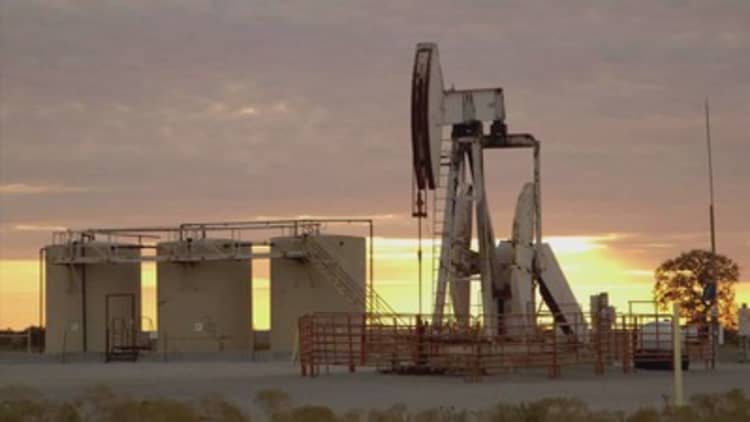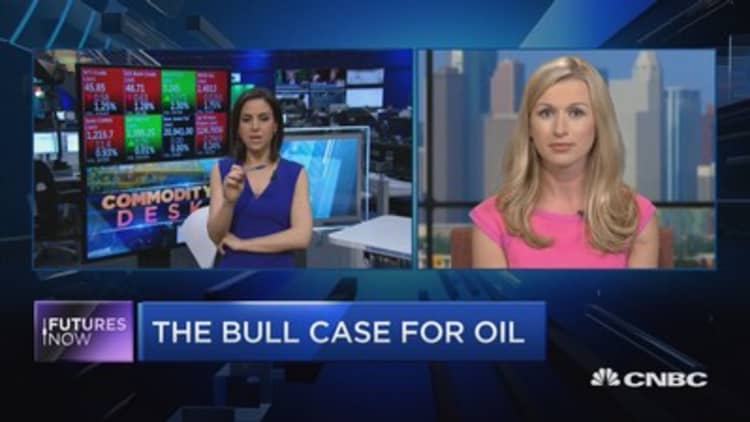OPEC continued to reduce production in April, but output from top exporter Saudi Arabia ticked up last month.
In its monthly report Thursday, the producer group raised its forecast for oil supply growth from nonmembers in 2017 but kept its outlook for global crude demand unchanged.
Saudi crude oil production rose by nearly 50,000 barrels per day last month, according to figures from the kingdom and secondary sources. OPEC took about 18,000 bpd off the market in April, according to secondary sources listed in the OPEC report.
Saudi Arabia is still pumping well below the level it agreed to in November, when OPEC agreed to reduce its combined oil output by 1.2 million bpd in order to shrink huge global stockpiles and balance an oversupplied market.
But the market closely watches Riyadh's production because it has delivered the lion's share of OPEC's cuts during the first four months of the six-month deal. Oil prices pared gains immediately after OPEC released the report but later regained some ground.
Future prices got support this week after Saudi Arabia announced it had cut crude exports to the key Asian market. Data from tanker tracking firm ClipperData shows Saudi loadings for export fell by 670,000 barrels a day in April from October, the level against which OPEC measures compliance to the output cut deal.

OPEC's two largest African producers also raised production in April. Angola pumped nearly 100,000 bpd more than it did the previous month, while Nigeria's output jumped by about 50,000 bpd.
Those increases were offset by decreases by key Middle East producers.
Iraq, OPEC's second largest producer, cut production by 39,000 bpd; Iran dialed back by nearly 35,000 bpd; and output from Libya and the United Arab Emirates dropped by more than 60,000 bpd each.
Libya's national oil company on Wednesday said the country's output has topped 800,000 barrels a day for the first time since 2014, raising concerns that this month's production could offset cuts when OPEC next reports. Libya and Nigeria are exempt from the deal because they are trying to restore supplies sidelined by internal conflicts.

Much of the attention on OPEC is now focused on whether the group will extend the six-month deal through the rest of 2017 when members meet in two weeks.
Supply and demand outlook
OPEC now sees production from countries outside of OPEC, including the United States and Russia, rising by 950,000 bpd this year. That's up from its previous forecast of 580,000 bpd.
OPEC's revision is largely based on higher production in the United States, where producers who rely on expensive advanced drilling methods have become more profitable as prices rise. OPEC sees U.S. drillers increasing crude output by 600,000 barrels a day this year.
"US oil and gas companies have already stepped up activities in 2017 as they start to increase their spending amid a recovery in oil prices," OPEC said in the report.
OPEC left its 2017 forecast for world oil demand unchanged at 96.4 million barrels a day.


